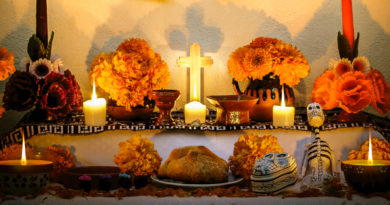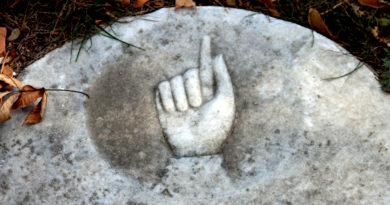Cemetery Headstone Symbols: Weeping Willow Tree

Photo © Chris Raymond
While visiting a cemetery, you might have wondered about a design you saw carved on an old tombstone and what it means. This article examines the meaning behind a weeping willow tree, a common headstone symbol in older cemeteries, church graveyards and memorial parks.
The Weeping Willow Tree Symbol
Quite popular on gravemarkers and tombstones in the early 1800s during the Greek Revival period, the weeping willow tree can assume many forms. Sometimes stylized, sometimes literal, the willow tree depictions seen in graveyards and cemeteries are usually easy to identify via their broad/wide crown and drooping branches.
In addition, it’s not uncommon to see other Greek symbols in conjunction with the willow, such as an urn, a nymph or a Grecian pedestal.
The Meaning of a Weeping Willow Tree
Because of its name and drooping branches, you might assume that a “weeping” willow tree merely represents the tears, grief and sadness associated with the death of a loved one. While this is generally the correct interpretation of this headstone symbol, a weeping willow tree also has a few other meanings — including happiness and even immortality.
In the Christian tradition, for example, the willow is mentioned several times in the Bible in varying contexts. In Leviticus 23:40, the Israelites receive these instructions: “And ye shall take you on the first day the boughs of goodly trees, branches of palm trees, and the boughs of thick trees, and willows of the brook; and ye shall rejoice before the Lord your God seven days.”
Psalm 137, however, mentions willow trees in a sad context: “By the rivers of Babylon, there we sat down, yea, we wept, when we remembered Zion. We hanged our harps upon the willows in the midst thereof. For there they that carried us away captive required of us a song; and they that wasted us required of us mirth, saying, Sing us one of the songs of Zion.”
Biblical references aside, the physical attributes of weeping willow trees can suggest longevity. For instance, willows grow relatively quickly and are remarkably hardy. Willows can lose a significant number of their branches due to pruning or storms and, provided their root system remains unharmed, fully regenerate.
In addition, cuttings from willow trees can grow into new trees even after laying on the ground for months unattended or even when planted upside down in the soil. For these reasons and more, people often associate willows with immortality and, when used on a tombstone or gravemarker, weeping willow trees can symbolize life after death, the resurrection of the soul, etc.







